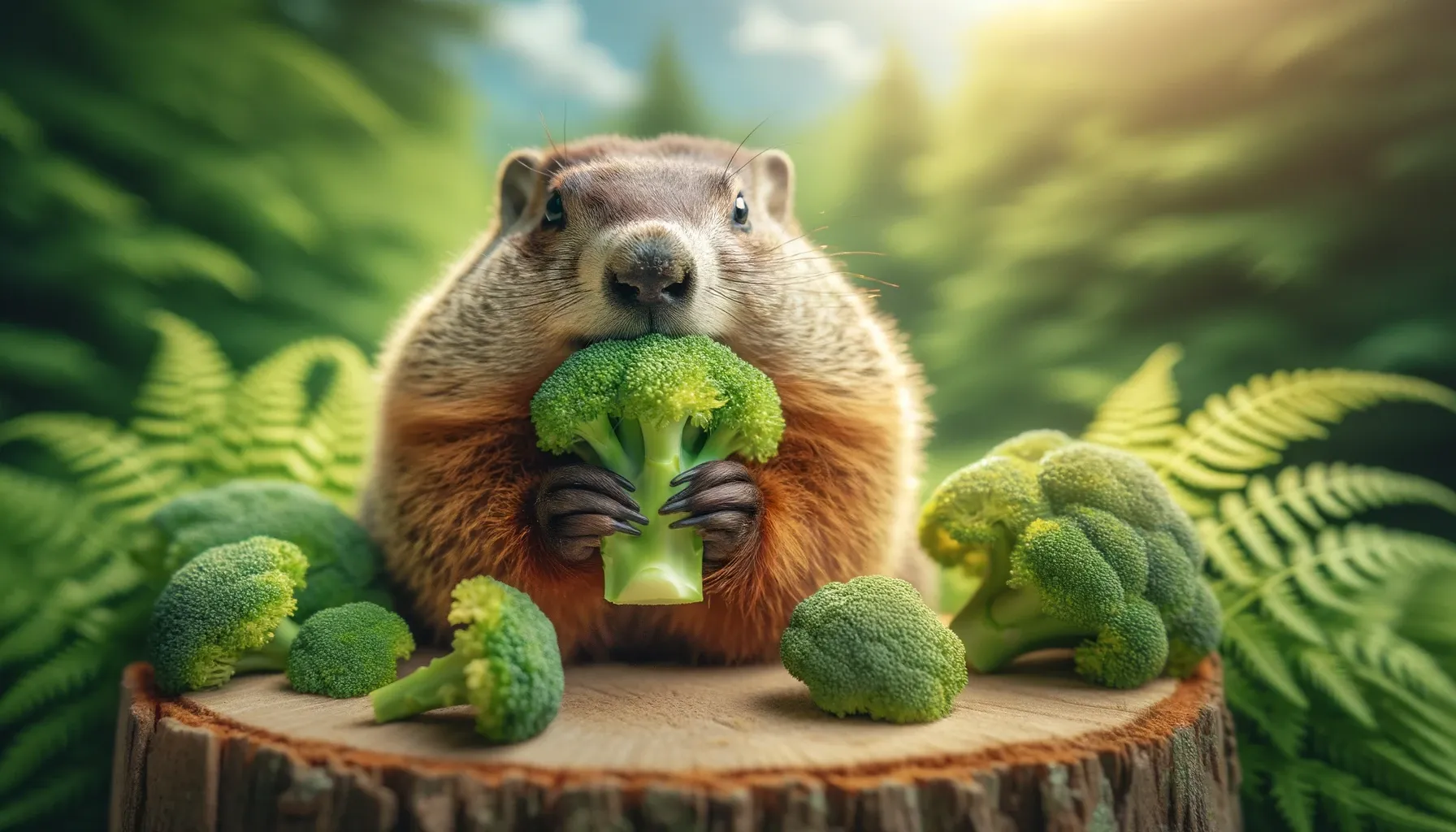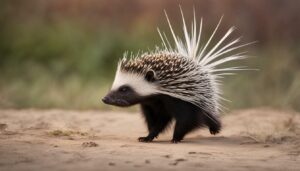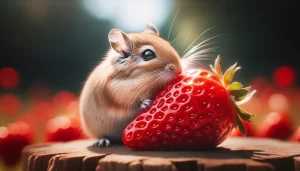Groundhogs, also known as woodchucks, are herbivorous mammals that primarily eat plant materials.
They have a diverse diet that includes grasses, leafy greens, vegetables, fruits, and even insects occasionally.
Groundhogs are known for their ability to adapt to different environments and take advantage of seasonal changes in food availability.
They consume a variety of plants, including broccoli, as part of their diet. Groundhogs are considered herbivores and do not consume any meat.
Key Takeaways:
- Groundhogs have a varied diet that includes grasses, leafy greens, vegetables, fruits, and occasional insects.
- Broccoli is part of their plant-based diet.
- Groundhogs adapt their feeding habits throughout the year to take advantage of seasonal changes in food availability.
- They primarily eat plant materials and are considered herbivores.
- Maintaining a well-maintained garden and implementing preventive measures can help deter groundhogs from eating your garden.
Groundhog Diet: What Do Groundhogs Eat?
Groundhogs have a varied diet that includes a mix of greens and vegetables. They enjoy feasting on a variety of leafy greens, such as lettuce, kale, spinach, and clover.
These greens provide essential nutrients and fiber that are vital for their overall health.
When it comes to vegetables, groundhogs exhibit a preference for various types. Carrots, beans, peas, squash, and tomatoes are among the vegetables they find particularly appetizing.
These vegetables not only offer nutritional value but also satisfy their taste buds with their flavors and textures.
In addition to greens and vegetables, groundhogs are attracted to the sweetness and high energy content of fruits.
They may consume a range of fruits, including apples, blueberries, cherries, grapes, and others. Fruits serve as a delicious treat and a source of hydration for these herbivorous mammals.
Groundhog Feeding Preferences:
Groundhogs have specific feeding preferences that may vary from individual to individual. While they primarily have an herbivorous diet, they may occasionally consume insects and small creatures if they come across them accidentally.
However, this is not a regular part of their preferred diet.
| Preferred Foods: | Foods They Rarely Eat: |
|---|---|
|
|
Understanding the dietary preferences of groundhogs can help us better coexist with these fascinating creatures.
With their diverse palate and ability to adapt to different food sources, groundhogs play an important role in maintaining the balance of ecosystems.
Groundhog Feeding Habits Throughout the Year

Groundhogs exhibit different feeding habits depending on the time of year. In the spring, their diet consists mainly of young shoots, grasses, clover, and flower buds.
As summer arrives and vegetation thrives, groundhogs take advantage of the abundance of fruits and vegetables.
This includes feasting on garden vegetables, wild berries, and even insects they may come across.
During the fall, groundhogs continue to enjoy a diverse diet, focusing on fruits, vegetables, and nuts to build up their fat reserves for the upcoming winter hibernation.
It is during this time that groundhogs may encounter broccoli and other vegetables in gardens, providing them with additional nourishment.
However, it’s important to note that groundhogs are primarily herbivores and do not have a specific taste for broccoli or any other specific food.
During the winter months, while groundhogs are hibernating, they do not consume any food. Instead, they rely on the fat reserves they accumulated during the fall to sustain them until spring arrives.
It is during this time that groundhogs experience a significant decrease in their metabolic rate, allowing them to conserve energy in their underground burrows.
Groundhog Feeding Habits Throughout the Year:
| Season | Main Food Sources |
|---|---|
| Spring | Young shoots, grasses, clover, flower buds |
| Summer | Garden vegetables, wild berries, insects |
| Fall | Fruits, vegetables, nuts |
| Winter | Hibernation, no food consumed |
Understanding the feeding habits of groundhogs throughout the year can help in managing potential interactions and coexistence with these fascinating creatures.
While they may occasionally encounter vegetables such as broccoli, groundhogs do not have a specific taste for them, but rather consume a wide variety of plant materials based on seasonal availability.
By implementing preventive measures to protect gardens and being aware of their natural dietary preferences, we can maintain a harmonious relationship with these herbivorous mammals.
How to Prevent Groundhogs from Eating Your Garden

If you have a garden, you’re likely familiar with the frustration of groundhogs feasting on your plants.
These herbivorous mammals have a diverse diet, which includes a variety of greens, vegetables, and fruits.
While groundhogs do consume broccoli, there are measures you can take to prevent them from eating your garden.
One effective method is to install a fence around your garden. Groundhogs are excellent climbers, so make sure the fence is at least six feet tall and extends a few inches below ground to prevent them from burrowing underneath.
Additionally, adding a mesh or wire barrier that slants outward at a 45-degree angle can further deter groundhogs from attempting to climb over the fence.
Another approach is to use deterrents. Groundhogs have a strong sense of smell and are easily deterred by strong odors.
You can try placing predator urine or ammonia-soaked rags around the perimeter of your garden to create an unpleasant scent for the groundhogs.
It’s important to periodically reapply these deterrents to maintain their effectiveness.
Furthermore, removing any potential food sources can help discourage groundhogs from entering your garden.
Ensure that pet food and bird feeders are not easily accessible to groundhogs, as these can attract them to your yard.
Additionally, keeping your garden well-maintained by promptly removing fallen fruits, vegetables, and excess vegetation can help minimize their interest in your garden.
By implementing these preventive measures, you can create a barrier between groundhogs and your garden, helping to protect your plants and maintain a harmonious coexistence with these foraging creatures.
Conclusion
Groundhogs have a diverse and interesting diet that consists of various plants, greens, vegetables, and fruits.
As herbivorous mammals, they primarily feed on plant materials, but they may occasionally include insects and small creatures in their diet.
Their ability to adapt their feeding habits throughout the year allows them to take advantage of seasonal changes in food availability.
To prevent groundhogs from eating your garden, it is important to implement effective preventative measures. Installing a fence around your garden can help keep these curious creatures out.
Additionally, using deterrents such as predator urine or ammonia can discourage groundhogs from entering your property. It is also crucial to remove any food sources that may attract groundhogs, such as pet food or bird feeders.
By understanding their dietary preferences and implementing appropriate prevention methods, you can maintain a harmonious coexistence with these herbivorous mammals.
Groundhogs play an important role in the ecosystem and can be fascinating creatures to observe. With the right precautions in place, you can enjoy your garden while ensuring that groundhogs find their food sources elsewhere.
FAQ
Do groundhogs eat broccoli?
Yes, groundhogs have a varied diet that includes a variety of plants, including broccoli.
What do groundhogs eat?
Groundhogs primarily eat plant materials such as grasses, leafy greens, vegetables, fruits, and occasionally insects.
Do groundhogs have a taste for broccoli?
Yes, groundhogs are known to consume broccoli as part of their diverse diet.
What are groundhog feeding preferences?
Groundhogs have a preference for greens like lettuce, kale, spinach, and vegetables such as carrots, beans, peas, squash, and tomatoes.
What are groundhog eating habits throughout the year?
Groundhogs adapt their feeding habits throughout the year, focusing on different plants and food sources depending on the season.
Can groundhogs consume broccoli?
Yes, groundhogs can consume broccoli as part of their varied diet.
How to prevent groundhogs from eating your garden?
Installing a fence, using deterrents, removing food sources, and maintaining a well-maintained garden can help prevent groundhogs from eating your garden.
What are groundhog food habits?
Groundhogs have a diverse diet that includes a variety of plants, greens, vegetables, fruits, and occasionally insects.
What are groundhog feeding preferences?
Groundhogs have a preference for greens, such as lettuce, kale, spinach, and vegetables like carrots, beans, peas, squash, and tomatoes.
What are groundhog eating habits?
Groundhogs adapt their feeding habits throughout the year, focusing on different plants and food sources depending on the season.




